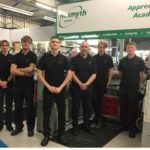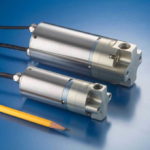We haven’t seen supersonic air travel since the demise of Concorde in 2003 but a number of companies are pushing ahead to make it happen again soon. A FINN Sessions panel at Farnborough Airshow recently discussed the state of play.
One big question is: if supsersonic didn’t work out for Concorde, why would it now?
The holy grail
Ernie Edwards: Chief Commercial Officer, Aerion, said that finding the right engine is the “holy grail” of making supersonic flight a reality. Engines need to comply with existing regulations and be up to the job of future ones.
“We’re there now, with the engine we’ve selected from GE,” said Edwards.
“The GE engine is in commercial use today with the airliners. The engine collectively, across a fleet of airplanes, has over a billion hours of safe flying, and GE are analysing that engine to see what they need to do to modify it for our requirements.”
“We should be getting the results of the analysis [soon],” he added.
Vik Kachoria, CEO, Spike Aerospace, commented: “Concorde went out of service in 2003. I was tremendously disappointed. As a child, I would always watch the Concorde fly. It’s incredibly glamorous, a luxurious aircraft, and I imagined I would be living that lifestyle – hopping on a flight to Paris and getting a croissant on a Sunday morning and flying back for dinner. Isn’t that what we all wanted back then?
“Now that I’m flying for business a lot, I travel huge distances. I’d love to be able to do it faster, and that’s the motivation we all understand if we do a lot of international flying – we need to get somewhere faster. We need to do our business, go on to the next place and return home.”
On Spike’s progress, Kachoria said: “This is a tremendously exciting period in our company’s evolution.
“We’ve gone from an idea, how this would be really cool, to a concept to engineering, and we’ve actually had a flying prototype scaled model of our aircraft that demonstrates the platform that we have, the design that we have.
“It’s exciting to see. We learned a lot, and now we’re getting ready to fly the next one towards the end of the fall.”
Funding
Funding is also a challenge, with many of the key supersonic players being entrepreneurs rather than major OEMs.
Kachoria, who called himself a “technology super geek” said: “I’ve self-funded some of it. I also have some investors at this stage, and we’re moving forward with larger investors. I’m quite comfortable with where we are and where we will be in the future [with funding], that we will be able to take it all the way through to certification and delivery.”
Edwards added: “[The fact is] it’s hard. It’s the single reason why it hasn’t been done until now.
“Concorde, back in the sixties, took ten years and two governments to bring the aircraft to market. It was a job creation enterprise to begin with, and it’s sad that Concord eventually failed,” he said.
Today, the challenges to bringing an aircraft to market are finding an engine that meets environmental and other regulatory restrictions, and finding the money.
Edwards said: “You have an engine, you have an airframe, somebody that can build the airplane. You have sales, which you need, and you also need the money. It’s a four-legged stool and you don’t want any of the legs coming off. And we’re just about there now – as soon as we get the engine sorted out. I think we’re ready to make a definitive announcement on the engine [soon] and sign the final agreements with GE, and we have Lockheed as a manufacturer, who’s built more supersonic airplanes than anybody in the world. So we feel very confident we’ll bring this aircraft to market, and it’ll be worth waiting for.”
Who will benefit?
Both panellists agreed that – at least at first – supersonic travel will be focused on business travellers, rather than the commercial market.
Edwards said: “I think if the airlines were crying out for supersonic transportation, there are some pretty mighty companies out there that could build it but I don’t think those airline manufactures yet see a crying need from the airlines for this airplane. We’ve elected to go the business jet way because we think this is the lowest risk to entry into service, because the ultra-high-net-worth individuals aren’t as sensitive [on cost].”
He added: “And I think that’s proving true. We have an order from Flexjet…for 20 airplanes already. So we’re on our way to building a good order backlog.”
Kachoria, said: “When we first started off, we were looking at this as a private business jet that would be used by ultra-wealthy individuals to manage their operations globally – to go visit plants, recruit people, talk to customers, and do investments. As we look at the market, I think that is still the early adopters. They have the interest and means.”
However, he said in future he believes the market could expand to first class and business class commercial passengers, as well as corporate flight departments and others.
Watch the full video for a discussion of what a supersonic aeroplane might sell for, how much a ticket will cost and how emissions and noise will be managed – particularly the sonic boom.

